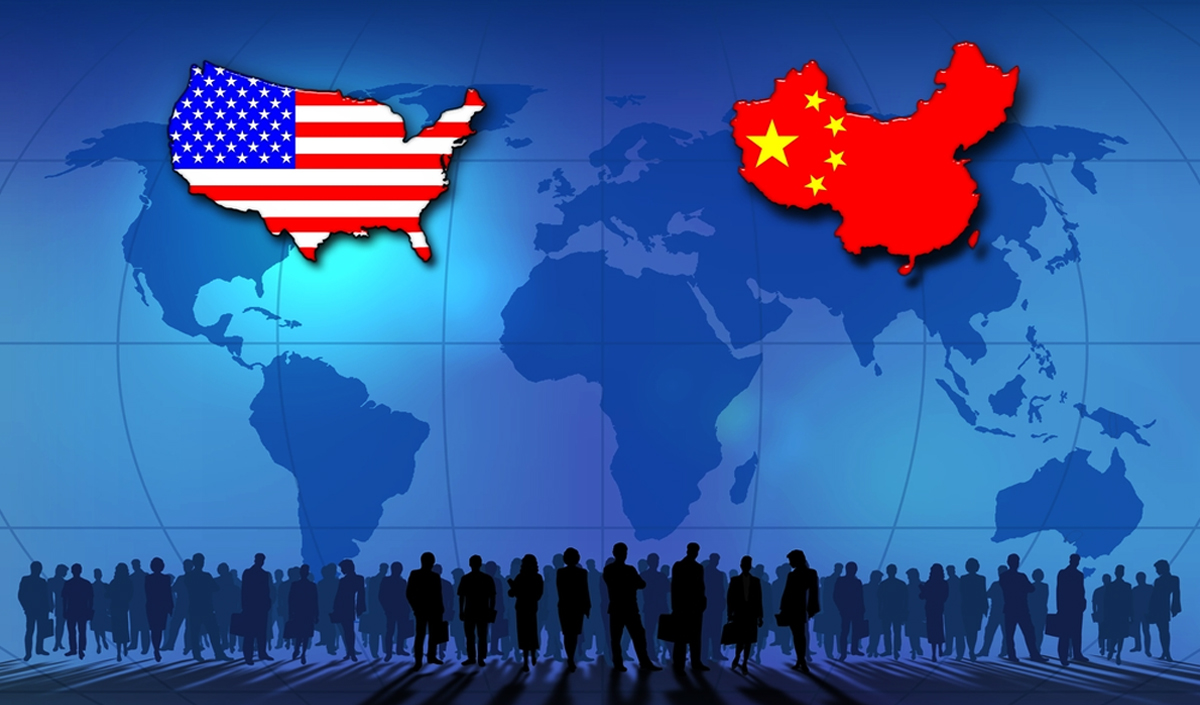The world today is witnessing how the relationship between the United States of America (USA) and China is changing. These two countries are very important due to their largest economies and military powers in the world. The rivalry between China and the USA did not happen overnight. It has a long history influenced by political, economic, and military changes over the decades. After World War II, the USA emerged as the world’s leading power, promoting democracy and a market economy. On the other hand, China went through major changes, including a civil war and the establishment of the Communist government in 1949.For many years, the two countries had limited contact and even hostility during the Cold War. However, in the 1970s, they began to improve relations, opening their way to trade and communication. however, China’s rapid economic growth in the last 40 years has shifted the balance of power, making it a strong competitor to the USA. Currently, their rivalry is about who will lead the world politically, economically, and militarily. This competition affects global peace and stability in many ways.
The main areas where the USA and China strongly disagree with each other and face tensions are trade, technology, military power, and politics. In trade, the USA has a stance that China does not play fair by stealing technology and helping its own companies too much, so the USA has put taxes on many Chinese products which China has responded to with similar actions. In technology, both countries want to be the leaders in new inventions like 5G internet and artificial intelligence, but they also worry about spying and keeping their information safe from hackers. Militarily, tensions are high because China wants control over Taiwan, which the USA supports as independent state, and China claims large parts of the South China Sea, a key area for shipping and military movement, where the USA also has interests. Politically, the USA being the beacon of democracy, criticizes China for its way of governance and how it treats its people, while China sees this as interference and pushes back strongly. All these issues together make the relationship between the two countries very complicated and sometimes difficult.
The U.S.-China trade war has intensified in 2025, with significant economic and geopolitical repercussions. In April 2025, President of the United States Donald Trump imposed a 10% baseline tariff on most imports and additional tariffs on specific countries, including China. A U.S. federal court later blocked these tariffs, citing overreach of executive power. Despite this, the administration is considering further trade restrictions, such as tariffs on agricultural imports and a review of lumber tariffs. China responded by imposing 10–15% tariffs on approximately $22 billion worth of U.S. goods, including agricultural products like soybeans, pork, and cotton, as well as timber. Additionally, China has restricted exports of critical minerals essential for technology production.
This ongoing trade war has disrupted global supply chains, leading to increased shipping costs and inflationary pressures. Countries like Vietnam, India, and Mexico have become alternative manufacturing hubs, attracting foreign investment. However, the IMF has revised global GDP growth projections downward due to these tensions.
While being in the state of war and being the cause of global uncertainty, both countries have their fair share of support from their allies. The USA is supported by a network of allies including NATO countries in Europe, key partners in Asia such as Japan, South Korea, and Australia, the European Union, and increasingly India, all of whom share common interests in democracy, security, and free trade; meanwhile, China’s main supporters include Russia, members of the BRICS group (Brazil, Russia, India, China, South Africa), countries in the Shanghai Cooperation Organization, and many developing nations across Africa, Asia, and Latin America that are economically linked to China through initiatives like the Belt and Road, forming a growing bloc that often counters Western influence. Also Pakistan is one of China’s closest allies in Asia, supporting China politically and economically, especially through projects like the China-Pakistan Economic Corridor, which is a key part of China’s Belt and Road Initiative, strengthening their strategic partnership. China also played a significant role in current conflict between Pakistan and India by supporting Pakistan politically, economically, and strategically. China backs Pakistan’s claims on Kashmir in some international discussions and provides military and economic assistance, including the important China-Pakistan Economic Corridor.
While the rivalry between China and USA has divided the world into two blocks, it affects the world in many ways. Because these two countries are so powerful, their competition influences global trade, security, technology, and politics. When they argue or impose tariffs, it slows down economic growth and make goods more expensive for people across the world. Military tensions, especially around Taiwan and the South China Sea, create fears of conflict that could involve other countries and disturb world peace and can cause a full fledge war not only between these two countries but all over the world which will lead the world vulnerable. On the positive side, when the USA and China work together, they can solve universal problems like climate change and health crises more effectively.
Looking ahead, this rivalry may become stronger as both countries try to lead the world, especially in technology and military power. However, if they continue to focus only on competition, the risk of misunderstandings or conflicts could grow. experts hope the two countries will find ways to cooperate and manage their rivalry peacefully, because the future stability of the world depends a lot on how well the USA and China get along.


